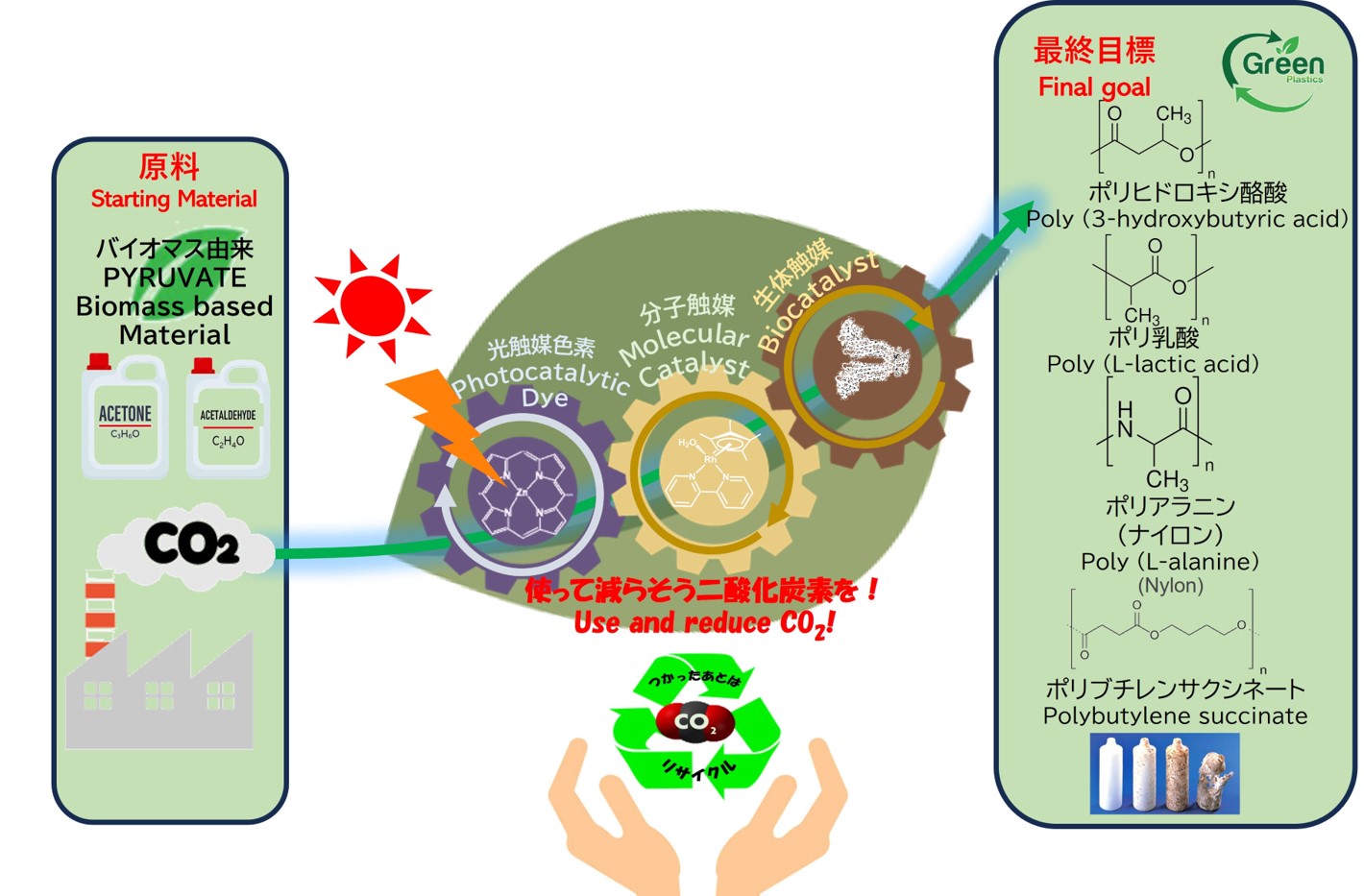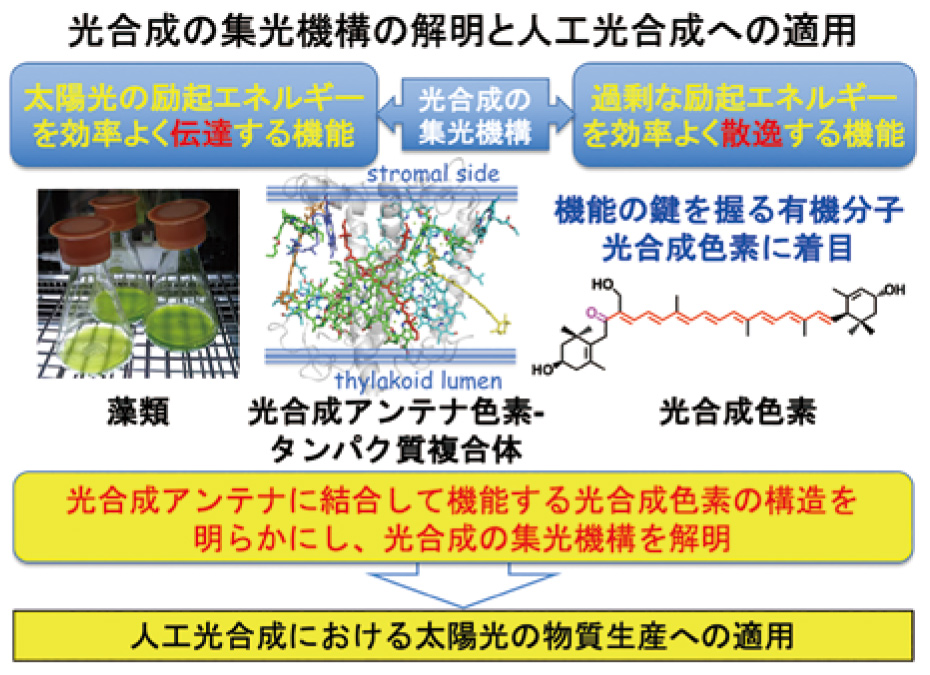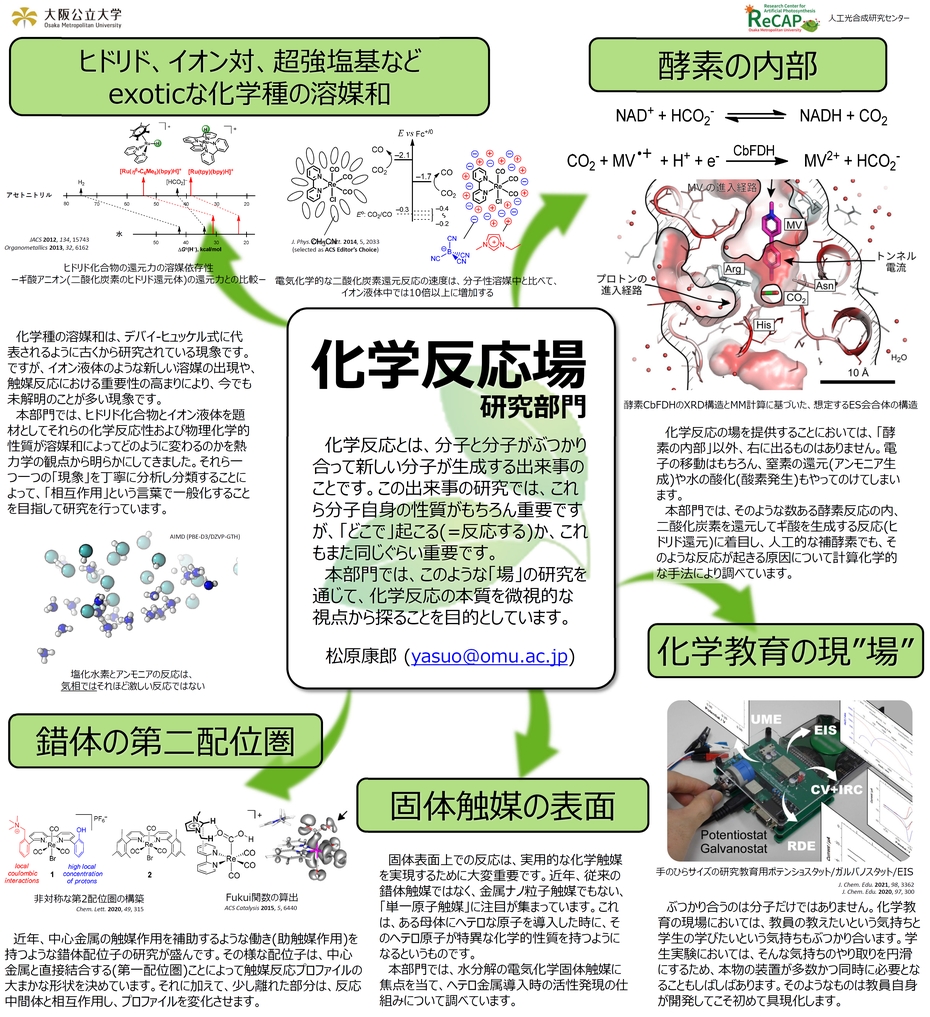Research Activities
Research Center for Artificial Photosynthesis Osaka Metropolitan University is engaged in a wide range of research activities from basic research to applied research by faculty members who are advancing research on photosynthesis and artificial photosynthesis toward the realization of an artificial photosynthetic society. The following is a summary of some of the representative results of research and technological development to date.
Biocatalyst Research Division
The Biocatalytic Research Division is conducting fundamental and applied research aimed at elucidating the reaction mechanisms of biocatalysts possessing carbon dioxide fixation and ammonia fixation functions, and constructing hybrid photocatalytic carbon dioxide conversion systems that combine these biocatalysts with molecular dyes and metal complex catalysts. Additionally, we are also developing homogeneous nanoparticle catalysts and their reaction control for the efficient decomposition of organic molecules produced from carbon dioxide to obtain hydrogen.
Member
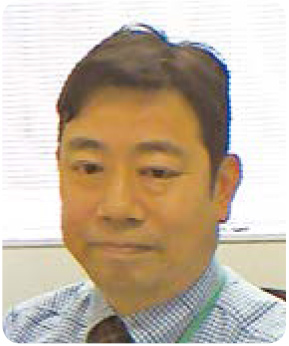
AMAO, Yutaka
Professor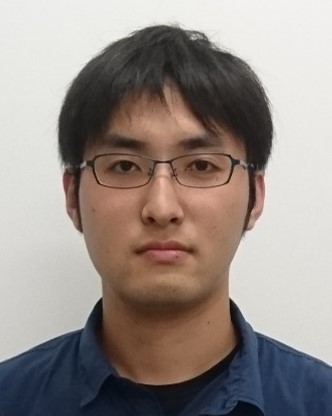
NAKAZONO, Takashi
Specially Appointed Lecturer
(Graduate School of Engineering / YAMADA Lab.)
Others Research assistant
Bioenergetics Research Division
The Bioenergetics Research Division is conducting research to elucidate the molecular mechanisms of highly efficient energy and material conversion specific to living organisms and to find their utilization in energy production. Currently, we are focusing on the function and structure of the "photosynthetic antenna pigment-protein complex," which converts solar energy into excitation energy to drive the high-energy material production system of photosynthesis, and are working on the modification of proteins and pigments and structural analysis from algae cultivation. We are also conducting research to mimic the energy conversion mechanism of living organisms in vitro and link it to material production.
Member
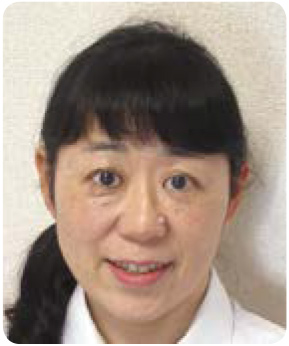
FUJII, Ritsuko
Associate Professor
Biocatalyst Research Division
In the Chemical Reaction Field Division, we define a "chemical reaction field" as a potential surface where a chemical reaction is likely to occur when matter and matter (or photons) are in close proximity. We study the formation and energetics of such a field. In the formation of a field, the interaction with the environment (also matter) surrounding the matter is a dominant factor. This is because the reactivity of a reaction is usually quite different depending on whether it occurs in the gas phase, in solution, on the surface of a solid, or inside an enzyme.
In this division, we focus particularly on the reaction systems (oxygen evolution reaction, hydrido reduction reaction, and electron transfer reaction) occurring in the photosynthetic light reaction. Our aim is to extract and elucidate the unique reactivity of these reactions by experimentally (or computationally) testing and comparing artificial reaction fields, which can only be performed in a flask or on a computer, and the inherent reactivity that is independent of the reaction field. Furthermore, we conduct daily research, including the fabrication of actual devices, to investigate whether particularly useful materials can be utilized as the operating principles of devices that convert light energy into chemical energy, focusing on the interactions between materials and chemical reaction fields.
Member
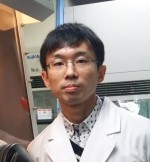
MATSUBARA,Yasuo
Associate Professor
